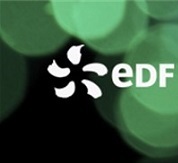The pitfall of a single indicator to rule them all? Evaluation of the performance of the French housing stock in the light of various indicators
Résumé
The energy performance of a building can be assessed using various indicators that will not give the same score. This study evaluates the performance of the French housing stock using several indicators based either on the energy level at which energy consumption is assessed (primary, final or useful), or on greenhouse gas emissions, or on the energy bill. An indicator calculated at each of the 3 stages of the energy chain allows a sequential approach to building performance: the "useful energy" level measures the performance of the thermal insulation of the envelope, the "final energy" level adds the consideration of the performance of equipment providing energy services, and the "primary energy" level combines the performance of energy sources. The paper focuses on the comparison of French (DPE, Diagnostic de Performance Energétique, French Energy Performance Certificate) and UK (EPC, Energy Performance Certificate) indicators. The European Union has widely disseminated the EPC for housing through the EPBD 2002/91/EC (Energy Performance of Buildings Directive, then revised in 2010 and 2018). Originally, with the exception of the number of seven energy classes, Member States were free to choose the details of the calculations of their "national" EPC. Most European countries including France-have chosen an absolute value scale to define performance ranges and a primary energy indicator for energy performance. The United Kingdom has chosen an indicator related to the energy bill and expressed on a standard scale. The impact of the different approaches proposed for evaluating the performance of the French housing stock is analysed. The relevance of the indicators is discussed according to two criteria: the nature of the actors to whom the evaluation is addressed (households, planners, politicians), and the objectives of the actions that the evaluation should guide (improving housing performance, reducing energy consumption, Green House Gas emissions (GHG), or energy bills). The results are put into perspective with the recent revision of the EPBD directive requiring that the energy performance of a building be expressed by means of a primary energy consumption indicator.
| Origine | Fichiers éditeurs autorisés sur une archive ouverte |
|---|
Loading...

